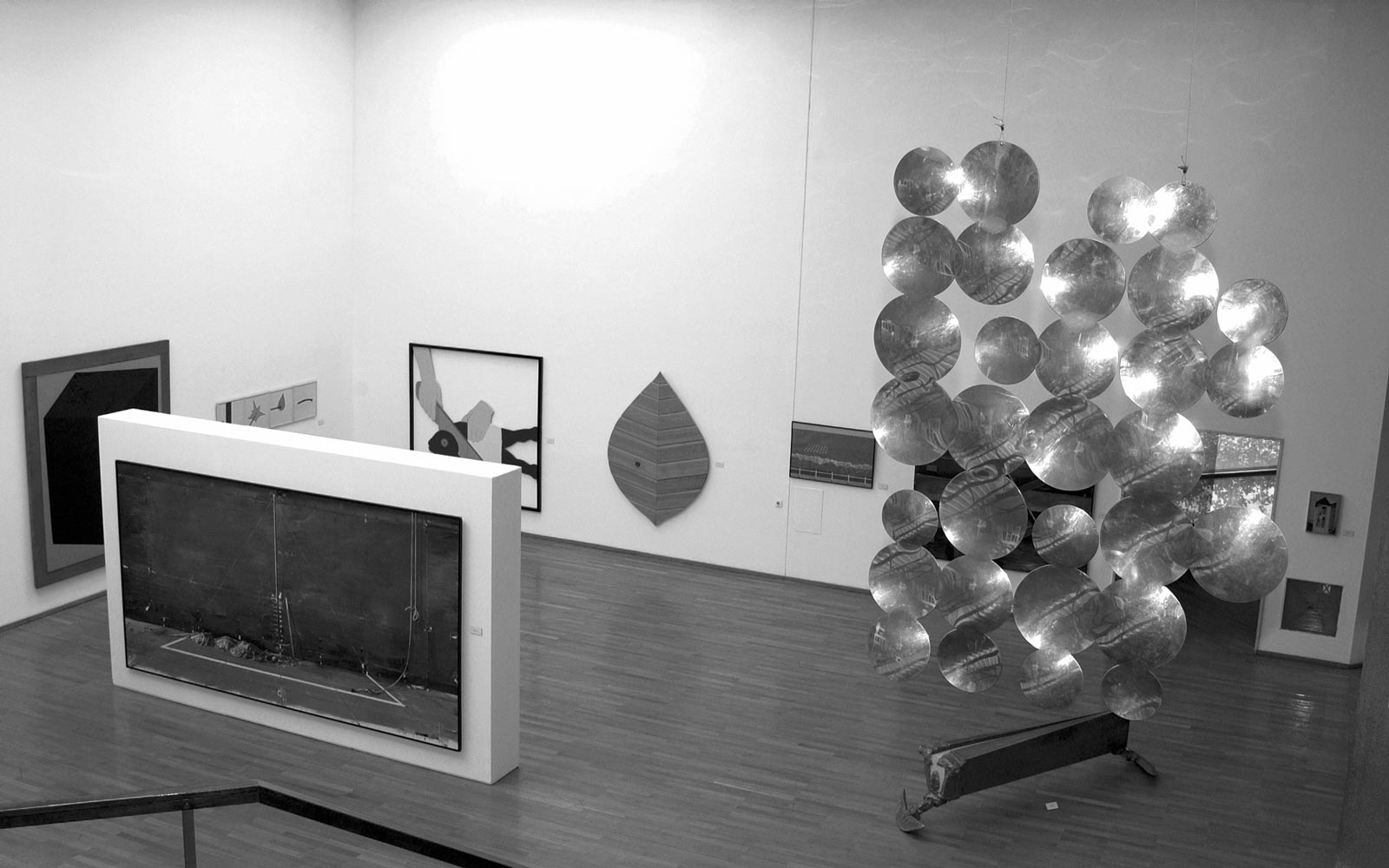The conception and ideology of the new display of the Museum of Contemporary Art in 2002.
The new display at the Museum of Contemporary Art with works from the Museum’s collection and occasional loans from other related institutions or individuals spans geographical, cultural and temporal constellation that can aptly be termed the “Yugoslav art space” roughly between 1900 and 1990, thus the constellation running from the very outset of the 20th century when the circles of progressive artists originated the idea and concrete endeavours of laying the foundations of the artistic community of Yugoslav peoples, via decades of the existence of the state shared by these peoples during the so-called “first” and “second” Yugoslavia, until its demise in the beginning of the 1990s.
The notion of the “Yugoslav art space”―this should be emphasized right away―is not some political construct with purportedly centralistic, unitarian or Yugonostalgic connotations, but rather it is a real historical fact predicated on the knowledge and conviction that throughout the entire 20th century artists from the whole of this area were actively involved in frequent and close interpersonal collaborations, which by no means puts a question mark over the incontestable matter-of-fact existence and becoming of the national art scenes and their fully legitimate cultural-historical qualifications (for instance, such as Serbian, Croat, Slovene, Macedonian art et al.).
The decision to have the new display at the Museum of Contemporary Art dedicated to the issue cluster termed the “Yugoslav art space” is due to the fact that the Museum owns a very rich collection of art works from the whole of the aforementioned space, in addition to exhibition and purchase policy of the Museum from its earliest days being programmatically directed precisely toward “Yugoslav art space” which at the time was not perceived as a self-sufficient and politically demarcated whole, instead being always regarded an integral part of a broader European and even larger universal art space, by no means at the detriment but rather in favour of the artist and art life from the narrower local and national milieu.

The new display at the Museum is, therefore, set on the basis of the insights into vast scale shifts taking place not only in art practices but also in the science of art history and museology in recent times. Namely, bearing in mind incentive example of the first show put on at the time of the opening of the Museum in 1965 by its founder and longstanding director Miodrag B. Protić done on the basis of the research and direct knowledge about then major model of the display of the New York Museum of Modern Art, the creators of the present display aspired to come up with a possible way of articulating the selection of works from the rich funds of the Belgrade Museum by crisscrossing different experiences (primarily the Tate Modern exhibitions and their author Lars Nittve) with their own ideas. The history of modern art in the more recent period acknowledged that essential art events and their meanings can no longer be tracked only through general and generalized stylistic formations, nor through the dominant matrices following the models of a couple of leading centres. Instead it is a matter of necessity to undertake detailed inquiries into a number of extremely specific problem-centred subjects and areas. The museological practice of presenting novel tendencies in modern art also had to abandon the approach based on sequences of exhibits set according to preformulated stylistic categories and recognized isms.
The latest show in the Museum is organized as a sequence or a set of parallel problem-centred “stories” that all unwind in the same era (hence, from the beginning of the war to the beginning of the 1990s), on the basis of the following theme blocs: Representations of the Face and Character, Representations of the Body, Representations of the Environment, Representations of the Social Context, Representations of the Imaginary, and Beyond Representation.
Within these problem-centred blocs and iconographical constellations each of which has the properties of specific narratives, for the permanent exhibition at the Museum—with equal respect accorded to both—the examples of radical avant-garde breakthroughs out of the well-established notion of art, and the top examples of those art views nourishing and drawing on historical memory and classical tradition, are selected and showcased. Such indeed very broad and tolerant selections from abundant collections of the Museum of Contemporary Art are done following a conviction that it is only in the pluralistic dialectics that the mutually extremely different voices and their comparative coexistence or indirect polemical confrontation one can fully grasp and perceive remarkable complexity and experience the exciting atmosphere of the emergence of nowadays almost boundless tendencies and issues in the art of the 20th century.
— Ješa Denegri, 2003.
